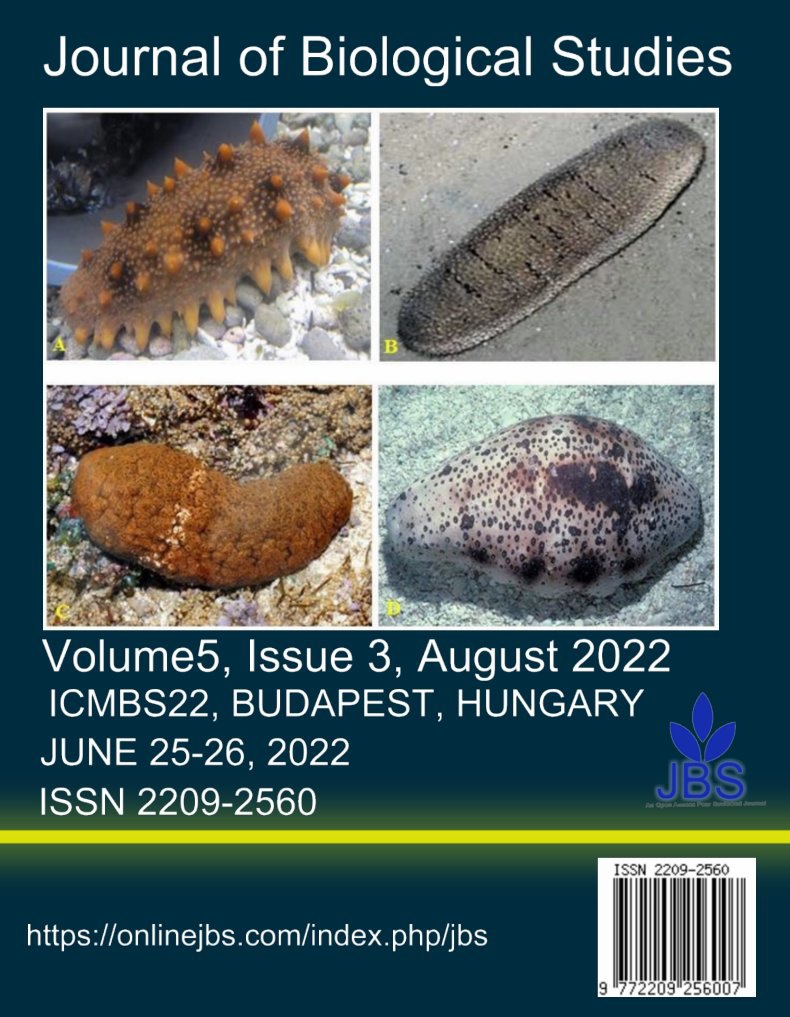Embryonic and larval development of the commercially important freshwater fish gobi, Glossogobius giuris (Hamilton, 1822)
Main Article Content
Abstract
The present study was carried out to investigate the embryonic and larval development of the commercially important freshwater fish gobi (Glossogobius giuris) in laboratory conditions at the Mini Hatchery cum Breeding Complex of the Department of Fisheries Biology and Genetics under the Faculty of Fisheries, Bangladesh Agricultural University (BAU), Mymensingh. Healthy broodstocks of both female and male gobi were collected from the grow-out ponds. Matured eggs and sperms were obtained through the induction of spawning by the injection of PG (pituitary gland) hormones. Fertilization was done by mixing of a few drops of sperm suspensions into the egg mashes in a small plastic bowl and washing several times to remove the excess sperm and unfertilized eggs. Fertilized eggs were then collected and incubated in a mini circular cemented tank with the provision of a continuous water supply. At least 10 fertilized eggs undergoing embryonic development were continuously monitored for studying the daily changes in their development. Fertilized eggs were collected randomly up to the morula stage every 4-5 h, and then after every 1 h interval until hatching and every 4 h after hatching. Soon after fertilization, the eggs were swelled, extended longitudinally, and became adhesive and light brownish to transparent in color. The unfertilized egg did not change in size and shape, rather turned whitish in color and became demersal. At fertilization, the length of eggs was increased from 0.6 to 3.0 mm and width from 0.3 to 0.5 mm, having a tendency to attach to the substrates or the shelters provided. The first cleavage of eggs has occurred within 1.3-2.5 h at 27.0 ± 1.0 °C. The development of the embryos of Gobi occurred about 15 h post-fertilization at 27.0-29.0 °C. The stages of embryonic development were observed with cleavage, followed by morula, blastula, gastrula, yolk plug stage, organogenesis and until hatching of non-pigmented larvae. Hatching started from 35 to 48 h post-fertilization and was completed within 5-6 h at the same temperature range, as all embryos did not hatch out at a time. Newly hatched larvae were measured to be 0.50-0.60 mm in length. The yolk sac was completely absorbed in 48-50 h during larval development and when the hatchlings reached 1.60 ± 0.02 mm in total length; they then started feeding within 48-60 h post-hatching. The findings of the present study have not only provided valuable information on the embryonic and larval development of gobi (G. giuris) but would immensely be helpful towards the establishment of large-scale seed production techniques for aquaculture and conservation of this important fishery.
Article Details

This work is licensed under a Creative Commons Attribution 4.0 International License.
